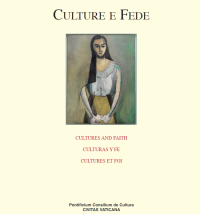Editorial
It's not the first time the Church reflects on the presence and needs of women. But it is the first time that for four days one of the most important gatherings has sought to look at the world through the eyes of women, lending their ears to presentations and witnessing by different female voices.
The Plenary Assembly of the Pontifical Council for Culture, whose contents are gathered here, took place in Rome from 4-7 February 2015 and was dedicated to the theme: “Women's Cultures: equality and difference”. All over the world this special presence (often forgotten and invisible) has continuously fed and enriched human communities. Women, in the world of today, ask to overcome the situation of the past, where they were lessened by the more powerful male world. They aspire to equality, to enjoy the same rights as men and equal opportunities in all areas of social life. They want to be taken seriously and spend their talents wherever commitment, service and authority are required.
Starting from different points of view, the authors of these articles reflect on these talents. They underline how men and women are inter-dependent subjects, always in relation. They observe a continuing separateness of the feminine which tends to confine women into a ghetto, sometimes decorated as formal beauty, other times darkened by prostitution. They recall the many tasks carried out in the Church, in society and in the family and concluded every day, even if just for the fact that the women are there; they recall, also, that the voices and needs are multiple and go well beyond the confines of the noisiest Western individualism.
Throughout all of the interventions, we can read the question of women's difference. Of what does it consist? We find many elements for an answer, not just in observing the present and the multiple roles of women, but also looking to the past and its treasures. And, nevertheless, the theme of difference poses a deeper question that remains with us. The question opens up the wider issue of the male and the female, about the world of humanity today and its rich potential.
 Culture e Fede Vol. XXIII 2015 N.2
Theme: Women's Cultures
Culture e Fede Vol. XXIII 2015 N.2
Theme: Women's Cultures



